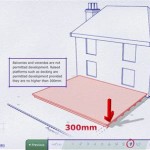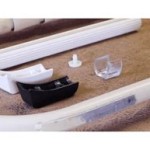Does a Patio Have To Be Sloped?
When designing and constructing a patio, one important consideration is whether or not it should have a slope. While some patios may benefit from a slight slope for drainage purposes, others may not require it. Understanding the factors that influence the need for a patio slope can help you make an informed decision for your outdoor space.
Drainage and Water Management
The primary reason for sloping a patio is to aid in drainage and prevent water accumulation. A well-sloped patio will allow rainwater to drain away from the house and other structures, minimizing the risk of water damage or pooling. In areas with heavy rainfall, a slope is particularly important to prevent water from collecting on the patio surface and creating a slippery or hazardous condition.
Aesthetics and Design
In addition to drainage, the slope of a patio can also impact its aesthetics and overall design. A slight slope can create a subtle visual interest and can help define different areas within the patio space. For example, sloping the patio away from the house can create a sense of transition and make the patio feel more distinct from the indoor living area.
Materials and Construction
The materials used for the patio surface and the construction methods employed can also influence the need for a slope. Some materials, such as concrete and pavers, are more susceptible to water absorption and may require a steeper slope to prevent water damage. Additionally, the presence of retaining walls or steps can affect the drainage of the patio and may necessitate a slope to ensure proper water flow.
Local Building Codes and Regulations
In some areas, local building codes or regulations may specify slope requirements for patios. These codes are typically in place to ensure proper drainage and prevent water damage to neighboring properties. It is important to check with your local authorities to determine if any specific slope requirements apply to your patio project.
Exceptions and Considerations
While sloping a patio is generally recommended for drainage purposes, there are some exceptions where it may not be necessary. For covered patios or patios in areas with very little rainfall, a slope may not be required. Additionally, patios made from materials that are highly resistant to water absorption, such as composite decking or sealed concrete, may not need to be sloped.
Conclusion
Whether or not a patio should be sloped depends on a number of factors, including drainage needs, aesthetics, materials, construction methods, and local building codes. By carefully considering these factors, you can make an informed decision that ensures your patio is both functional and aesthetically pleasing.

How Much Should A Patio Slope Away From House

My Garden Is Sloped Can I Still Install A Patio Home Logic
Questions On Sloping A Raised Patio Lawn Care Forum

Does My Patio Need To Be Sloped Back 40 Landscaping

Should A Deck Have Slope
.jpg?strip=all)
How To Install Patio Pavers Lv

How Much Slope Should A Paver Patio Have Roofing Contractor Chimney Sweep Siding Masonry New Jersey

Grading A Patio Located Away From House

How Much Slope Should A Paver Patio Have Driveway Expert

How To Lay A Patio
See Also








